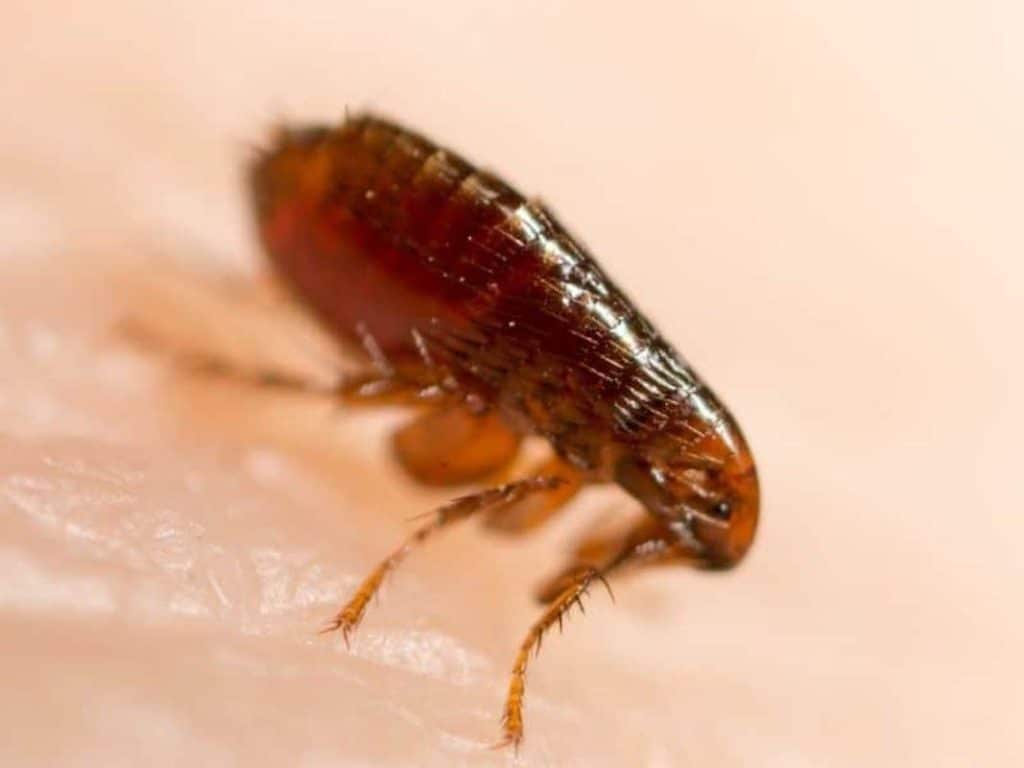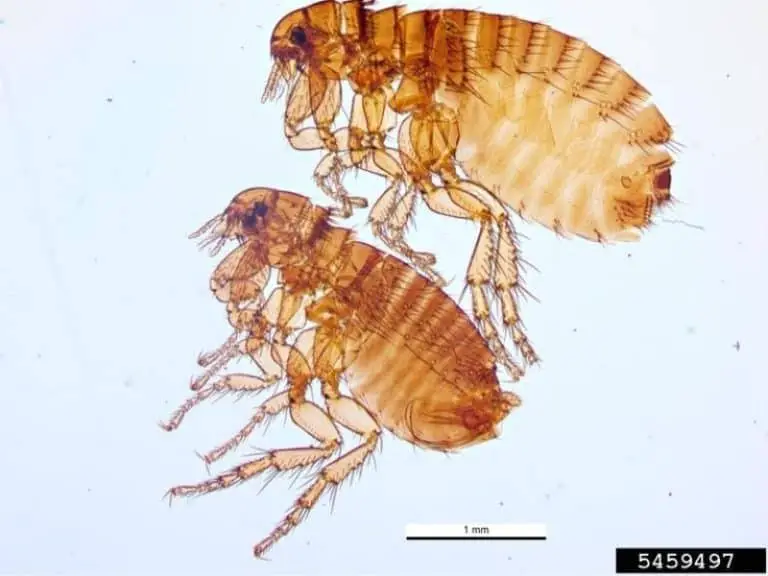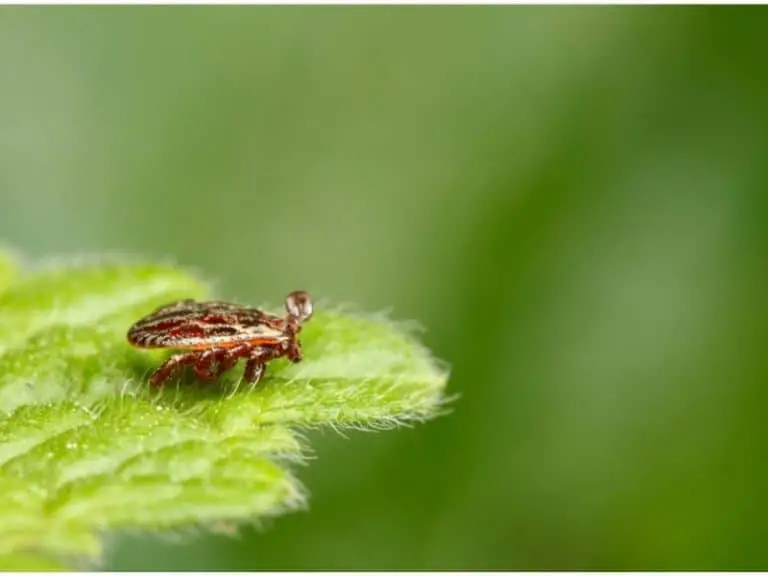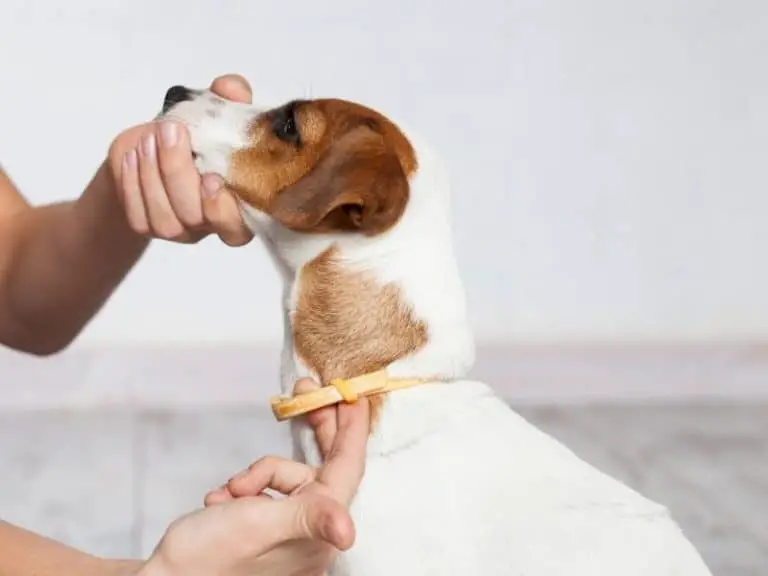Do Fleas Bite More When They Are Dying
It is dreadful to think of flea infestation, and it becomes even worse when you realize that they may bite even more when they are dying. Once you detect initial signs of fleas, it is already a significant problem. You will want to know and understand their behavior in order to determine how to prevent and eliminate them.
Fleas treated with anti-flea insecticide may become more active as they die, but they are not prone to biting more. Their hyperactivity is an effort to flee from the poison, which causes them to travel to the upper part of your pet’s fur or coat and die there or fall off from your pet.
Just the thought of fleas is enough to make anybody’s skin crawl.
That is why fleas should not be allowed to gain a foothold in our homes and pets, for they are more than a nuisance once they have infested your property.
Just the presence of one flea means there are many others already possibly breeding, with eggs and young ready to make matters worse.
Fleas are prolific, and even sometimes appear to be resistant to treatment. The eggs they lay lie in wait for months in a dormant state while waiting for the chance for a warm host such as your dog or cat to pass by, after which they feed.
Flea infestation is a serious matter and you should know everything you can about fleas for your eradication efforts to be effective.
Behavior of fleas when they are dying
Fleas, when treated with anti-flea medication or spray, may start acting more agitated before dying.

The poison makes them hyperactive prior to death, and you may see them appear on the upper part of your dog’s or cat’s coat. In addition, your pet could have a greater itch than what it usually experiences and may scratch more.
As your pet is being treated for fleas, the fleas may jump off from your pet and onto the surroundings. This is a natural reaction of any living being that is being poisoned. As the fleas start feeling the effects of the harmful chemicals, they could actively try to do something about it.
They could try moving out of the treated area, such as your dog’s fur, in a frantic rush to avoid whatever it is that is killing them.
If you found out that something is wrong with you and you feel like poison is starting to kill you, you might also panic and become more hyperactive too.
You will not be inclined to eat, especially if the poison is in the food you are eating or in your immediate surroundings. In the fleas’ case, it may be in your pet’s blood or in the fur’s environment.
And if your dog’s fur is the toxic area that is hurting the fleas, they may instinctively try to get out of it and jump onto the bed, the couch, or your carpet.
It has been the experience of many pet owners that once they have a flea problem and they treat their pet, the fleas get off from the pet as they start dying.
The fleas react to the poison and are doing everything they can to flee from it and its effects. Of course, many of them will stay on your pet and die there without ever having the chance to get off.
As the fleas die, you will observe dead and dying flea bodies on your pet and everywhere. You can spray them with anti-flea spray to finish the job and then vacuum them to remove their bodies. This is important because they have poison in them and they are not conducive to your and your family’s health.
In my experience as well as those of other pet owners, dozens of fleas, even reaching 40 or more if the infestation is really bad, will be crawling around as they die. You may see them on your sheets hours after you have treated your pet, especially if your pets sleep with you.
With good anti-flea medications, the fleas that get to the top of your pet’s fur will fall dead and will not leave the animal alive. Their dead bodies fall off or stay dead at the fur’s surface.
Signs of flea infestation
Whenever you have dogs or cats, you should always be prepared to encounter fleas. Similarly, if you move into a new home, ascertain if the previous owner had pets, or if you cannot acquire that information, be vigilant and look for possible signs of infestation.
If you suspect that you have fleas in your property, comb or brush your pet each day, and as you do, be on the lookout for small and dark grains or debris. This is what is known as flea dirt, and it is commonly the first visible indication of fleas.
It is easy to see flea dirt due to its very distinct ‘C’ shaped appearance. In fact, once you have learned how to identify this shape, you will be quite proficient in detecting it.
When you see dirt that looks suspicious on your pet’s fur, get some damp tissue paper or kitchen roll and shake some of the dirt from the fur. If it turns out to be flea dirt, then these dark flecks will begin to dissolve on the moist tissue, creating dark reddish or dark brown colored stains on it.
This is due to the fact that this “dirt” is composed of your pet’s dried blood, which came to be on their fur from the wounds that fleas have inflicted on your pet whenever they bite and feed on their blood.
As the dried blood drops off from the fur and into nooks, cracks, and crannies around the area, it provides sustenance to young, growing larval fleas.
Another sign of fleas is an increased itchiness in your pet, although there are also many other problems in pets that cause itching. As your flea problem intensifies, you may also start getting itchy on your ankles and legs, because the fleas are also beginning to bite you.
Obviously, the surest sign of an infestation is to actually see the fleas themselves. It is easy to recognize them. When you see one, you can look at and see them one second, and then they suddenly jump off and seemingly disappear the next.
This is because fleas are capable of jumping so high up that, together with their very miniscule size, it is hard to determine where they land. This makes it quite a challenge to catch them manually.
Add to this the fact that it is not so easy to crush them, also due to their very small size. But then, it is not recommended that you crush them with your nails or hand, because it is not hygienic to do so and fleas carry a lot of serious disease-causing microorganisms.
Flea eggs can be laid and can hatch in all rooms in your home. Adult fleas can hop and go many places and lay eggs as they go, making fleas so hard to eliminate.
Getting rid of fleas
In eradicating the fleas on your pet and your home, you can use many recommended treatments. One of them uses household items, specifically salt and baking soda. You can sprinkle these and they dry out flea larvae, pupae, and eggs. They die from severe lack of moisture.
It is also essential to treat your pet with an effective anti-flea powder, drops, or injection, depending on your veterinarian’s recommendation and your particular situation. When new fleas start to jump onto your dog to feast on their blood, they will be exposed to the medication that will kill them.
You can also spray anti-flea products around your home, including dark corners and cracks. You may also use flea bombs. Depending on the level of infestation, a flea bomb may be absolutely necessary to rid your home of these parasites.
Some owners, however, do not experience good results with flea bombs. This is especially frustrating for them because it takes a lot of effort to properly set up the home for the application of flea bombs.
Others found that it is effective to trap fleas. Some put dishes containing water with soap, and they put them under the night lights on their floor. He fleas get attracted to it and jump into the water. They don’t escape from it and drown in it.
Q & A
How long does it take for a flea to complete its entire life cycle?
Flea eggs take from two days up to two weeks before hatching, depending on environmental conditions. The larvae then emerge, and after five to 20 days from hatching, they start spinning cocoons for the pupa stage.
The pupa stage normally takes from a number of days up to several weeks. If the conditions are not ideal, pupae can last for months or even years. Once adults emerge, they start breeding within just a number of days. Adults can live from two weeks up to many months.
What proportion in a flea population does each stage of the flea life cycle have?
Flea eggs compose about half of a given flea population. Meanwhile, larvae compose about 35% of the population, and pupae compose about 10%. Adult fleas are only less than five percent.
Medical Disclaimer: TheHomePestControl is a digital publisher and does not offer personal health or medical advice. The contents of this website are not intended to substitute for professional medical advice, diagnosis, or treatment.
Affiliate Disclaimer: As an Amazon Associate, I earn from qualifying purchases made on our website. If you make a purchase through links from this website, I may earn a commission at no additional cost to you.






![How Much Do Fleas Poop In Their Lifetime [77mg]](https://wypestcontrol.com/wp-content/uploads/one-cat-flea-768x576.jpg)